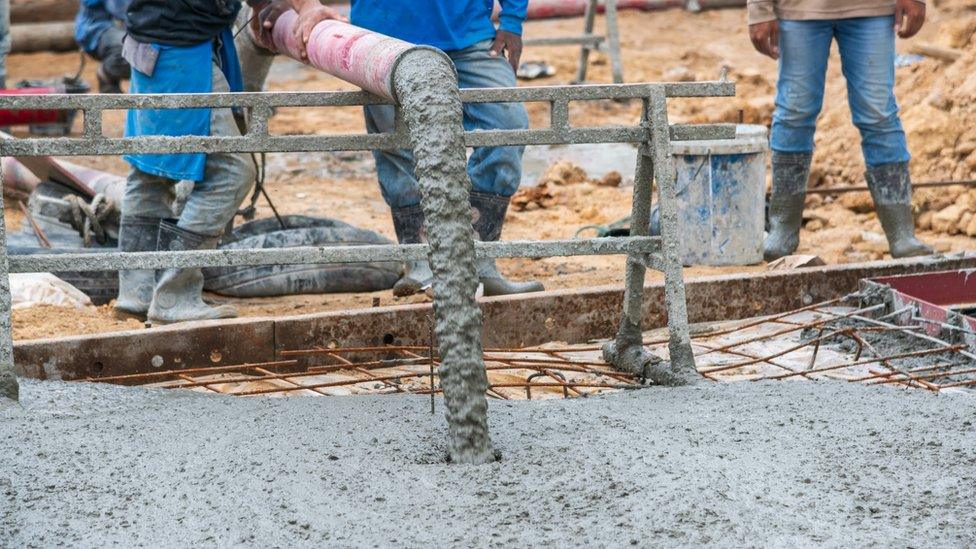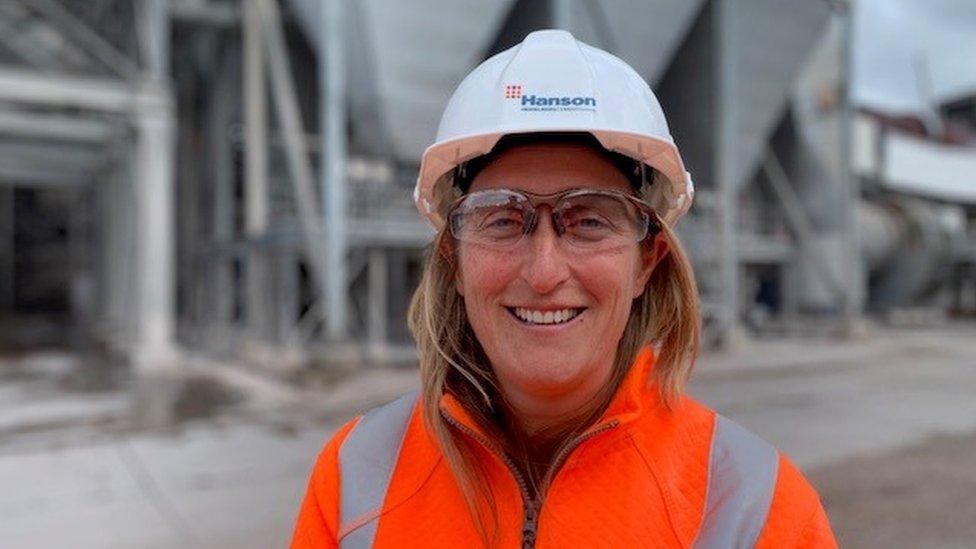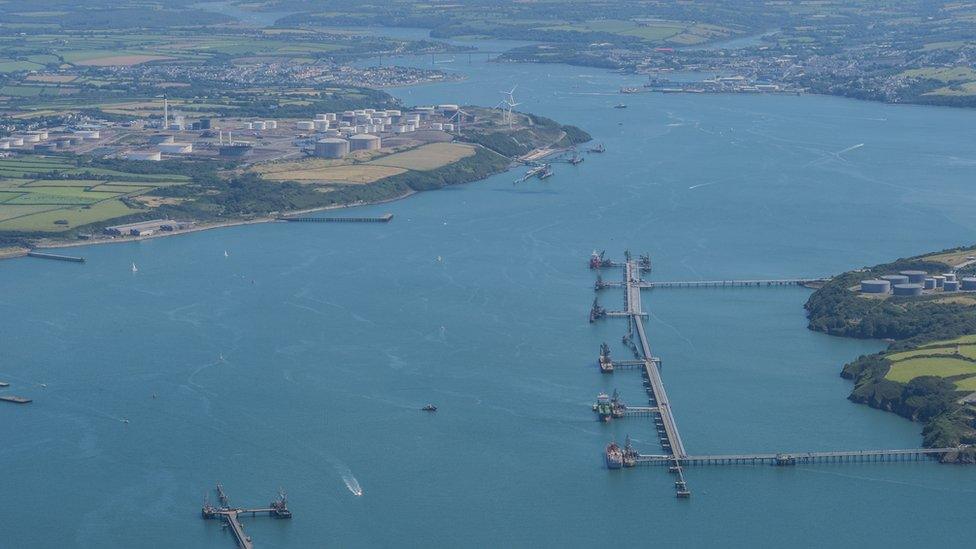Climate change: Flintshire cement work's carbon capture plan
- Published

The carbon will be captured at a new facility built on fields next to the Padeswood plant
A cement works has plans to pipe 800,000 tonnes of carbon dioxide a year out to sea to fight climate change.
Cement giant Hanson claims capturing carbon could play a vital role in the UK reaching its net-zero targets.
The company is planning a £400m facility at its Padeswood plant in Flintshire, making it the first carbon capture-enabled cement works in the UK.
While Greenpeace objects to some uses of carbon capture, it accepted it may be necessary for cement production.
Hanson is one of several companies chosen by the UK government to progress plans for carbon-reducing solutions as part of the HyNet project.
It would see CO2 pumped from companies in the north-west of England and north Wales and locked into depleted gas fields under the sea bed in Liverpool Bay using a huge network of pipes.
A large proportion of Hanson's emissions come from the chemical processes involved in making cement.
The company said the UK "simply cannot achieve its net-zero goals without the building materials we use being carbon neutral".
Marian Garfield, Hanson's director of sustainability, said Padeswood would become the first cement works in the UK to become "true net zero".
Last month, the UK government announced that the Acorn Project in Aberdeenshire was the latest of four carbon capture projects which will share up to £20bn of funding.
Ms Garfield said: "The announcement by the government is confidence that they're really behind the net zero and carbon capture technology, so for us it was a good, positive sign."
Hanson has said it wants the carbon capture facility to be operational by 2027, but it will need planning permission, environmental permits, and a public consultation before it can go ahead.
If approved, it said the project would be equivalent to taking 320,000 cars off the road.

Cement is used to create concrete, which Hanson says is the second most consumed material on the planet, after water
Hanson said there was no viable alternative to cement, which is carbon intensive to produce.
Currently, carbon from Padeswood is released through a 110m (360ft) stack which dominates the skyline around the site.
Under the plans it would instead be captured in a new facility built on fields next to the plant, covering an area roughly the size of seven football pitches.
From there, it would be pumped several kilometres before joining HyNet's pipe network out to sea.

Marian Garfield said the plans still face "a lot of hurdles" but that the company was "confident"
Hanson claims the project would protect 222 existing jobs and create 54 full-time jobs.
Its parent company, Heidelberg Materials, would fund the £400m project and is negotiating with the UK government on how it would be paid for the carbon it captures.
Doug Parr, policy director for Greenpeace UK, said: "What we know about carbon capture and storage where it's been used globally is that it's expensive and it's difficult to make work.
"We really shouldn't be relying on it to make lots and lots of our reduction in emissions that we need to tackle climate change.
"Worse than that, the fossil fuel industry have used it as a cover to carry on with business as usual.
"However, it's also true that in certain instances, like cement, it's very difficult to deal with it in any other way. In those circumstances, it probably is going to be necessary."
How does carbon capture and storage work?
Burning fossil fuels like oil, gas and coal to generate electricity emits CO2, which is the main driver of climate change.
The carbon capture process stops most of the CO2 produced from being released, and either re-uses it or stores it underground.
The British government says the North Sea is an ideal place to store CO2. It has plenty of old empty oil and gas reservoirs, and also permeable rocks known as saline aquifers.

YR WYDDFA: Life on Britain's busiest mountain
HOLLYWOOD OR BUST: How Wrexham AFC became a global sensation

- Published13 March 2023

- Published13 March 2023

- Published22 February 2023

- Published19 January 2023
